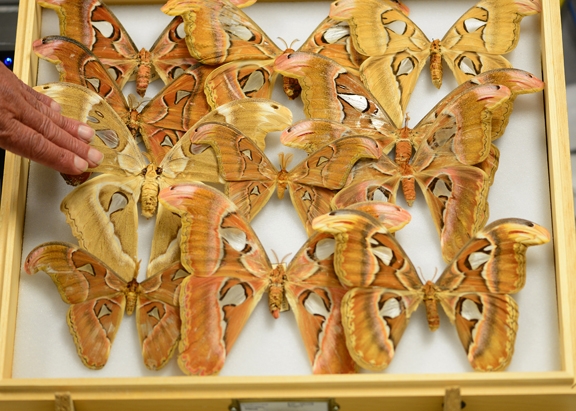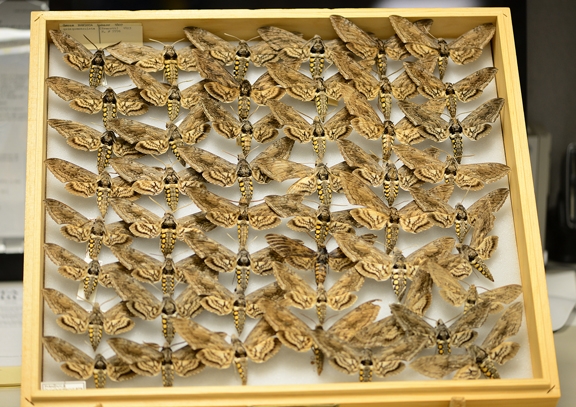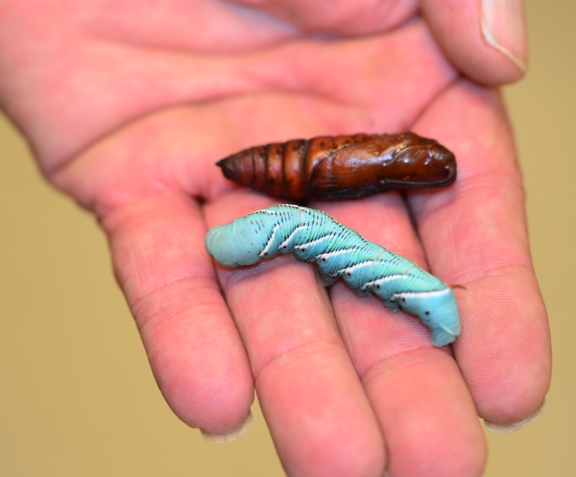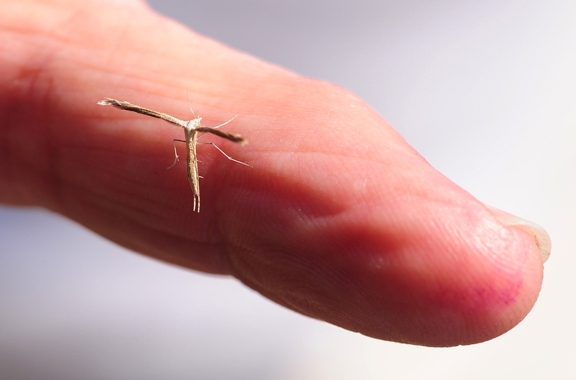- Author: Kathy Keatley Garvey
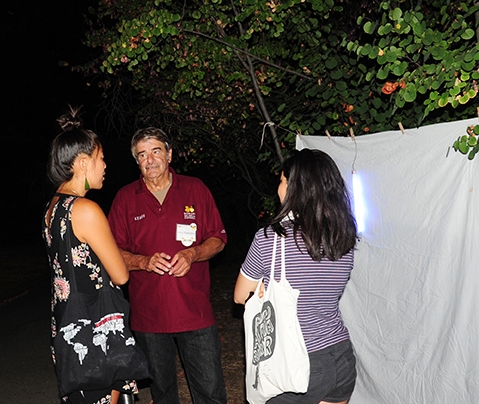
Some 145 people visited the UC Davis Bohart Museum of Entomology's open house last Saturday night between 8 and 11 in celebration of National Moth Week. Most stayed for the entire time, said Tabatha Yang, education and outreach coordinator.
Bohart Museum associate Greg Kareofelas and senior museum scientist Steve Heydon set up a blacklighting display: a white sheet and a mercury vapor lighting to attract moths and other flying insects.
“We recorded more than 15 species,” said Kareofelas, who has collected moths in his backyard in Davis for some 25 years. The first moth to arrive was the alfalfa looper moth, Trichopusia ni, and “the most striking,” he said, “was the grape leaffolder, Desmia funeralis.”
Inside the museum, located in Room 1124 of the Academic Surge Building on Crocker Lane, moths and butterflies took center stage. Visitors expressed amazement at the sizes and colors. Bohart associate Jeff Smith of Sacramento, who curates the butterfly and moth specimens, showed the worldwide collection and fielded questions.
Bohart associates and UC Davis students Lohitashwa Garikipati and Emma Cluff, UC Davis students, showed the museum's live petting zoo, which includes Madagascar hissing cockroaches, walking sticks, praying mantids and walking sticks.
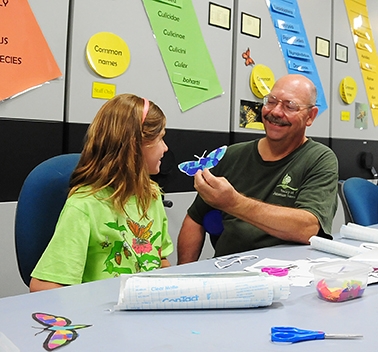
The Bohart visitors gazed at the photo of President Trump and remarked how tiny the moth is. The wingspan of the orange-yellow moth is less than one centimeter.
Nazari published the piece on the Trump moth Jan. 17, 2016 in the journal Zookeys and explained the name: “The reason for this choice of names is to bring wider public attention to the need to continue protecting fragile habitats in the U.S. that still contain many undescribed species."
Three Trump moths were collected in a Malaise trap in one of the washes on the east side of the dunes. In a contract with the U.S. Bureau of Land Management, the Bohart scientists have collected nearly 2,000 species of insects from about 200 square miles of sand, according to Lynn Kimsey, director of the Bohart Museum of Entomology and professor of entomology at UC Davis. Some six percent are new to science.
Of the Trump moths collected, Nazari kept one in Canada, the norm--but the holotype, the one he determined as the standard for the species--is a permanent part of the Bohart, said Tabatha Yang, education and outreach coordinator.
The Neopalpa donaldtrumpi belongs to the family, Gelechiidae of the Lepitoptera order.
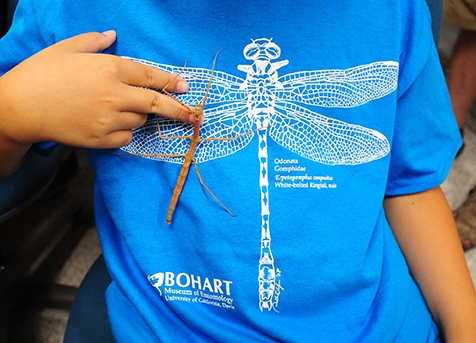
The next summer open house, also free and open to the public, is Sunday, Aug. 27 from 1 to 4 p.m. the theme is “Bark Beetles and Trees, Forest Health in California." The event is in collaboration with Steve Seybold, USDA Forest Service entomologist and an associate of the UC Davis Department of Entomology and Nematology. He and his students and staff will be there to show displays and answer questions.
The Bohart Museum, directed by Lynn Kimsey, professor of entomology at UC Davis, houses a global collection of nearly eight million specimens. It is also the home of the seventh largest insect collection in North America, and the California Insect Survey, a storehouse of the insect biodiversity. Noted entomologist Richard M. Bohart (1913-2007) founded the museum.
The museum's gift shop, open year around, includes T-shirts, sweatshirts, books, jewelry, posters, insect-collecting equipment and insect-themed candy.
The Bohart Museum's regular hours are from 9 a.m. to noon and 1 to 5 p.m. Mondays through Thursdays. The museum is closed to the public on Fridays, Saturdays and Sundays and on major holidays. Admission is free.
More information on the Bohart Museum is available on the website or by contacting (530) 752-0493 or email bmuseum@ucdavis.edu.
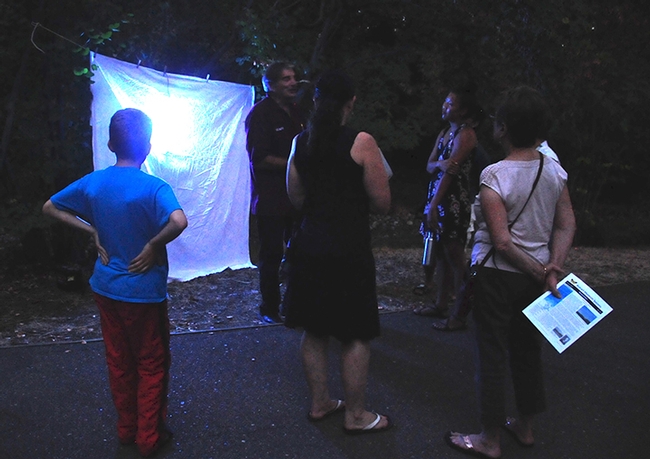
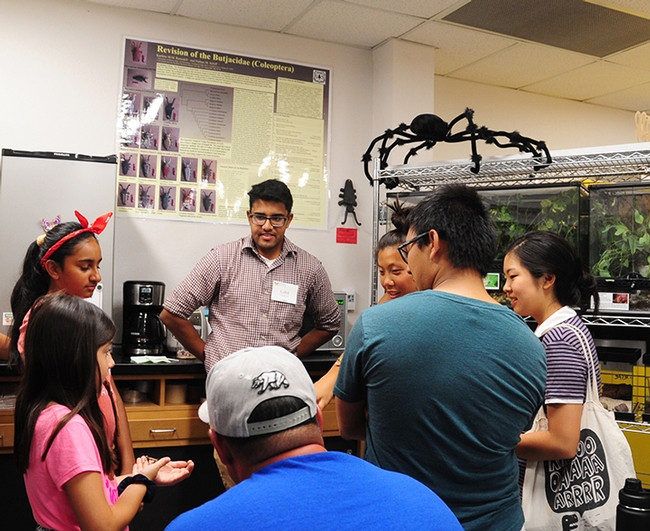
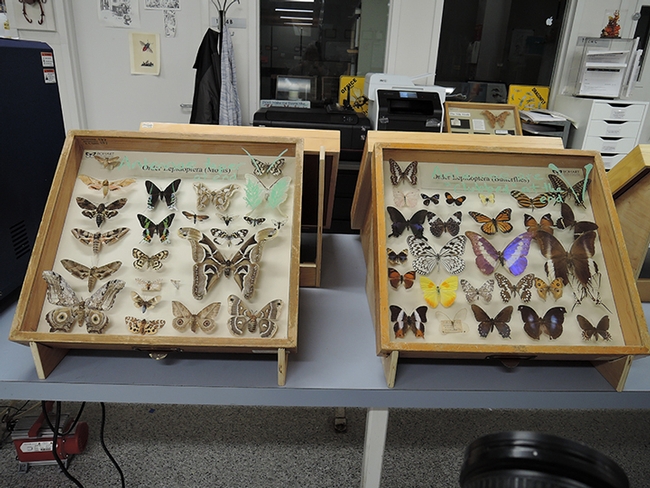
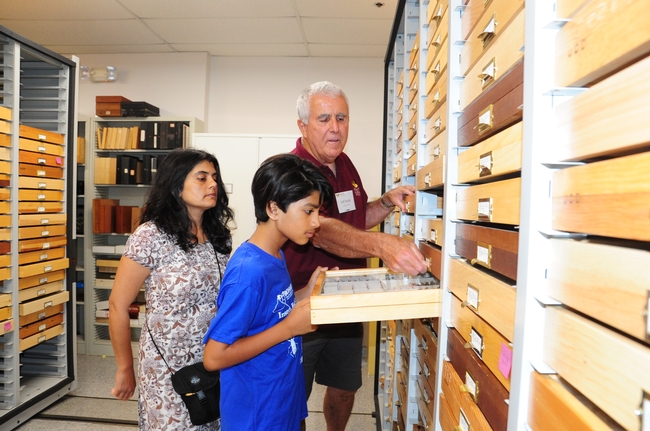
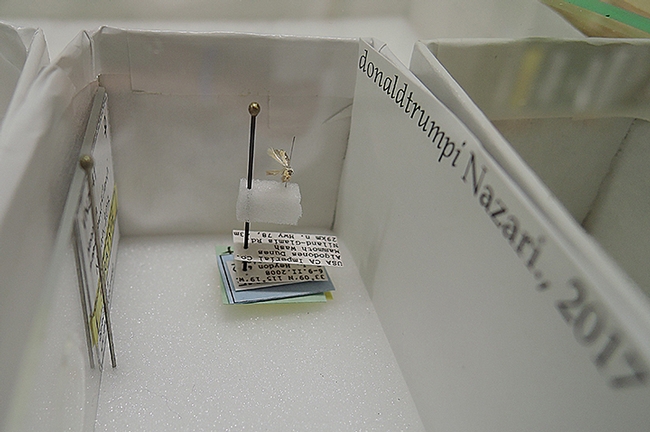
- Author: Kathy Keatley Garvey
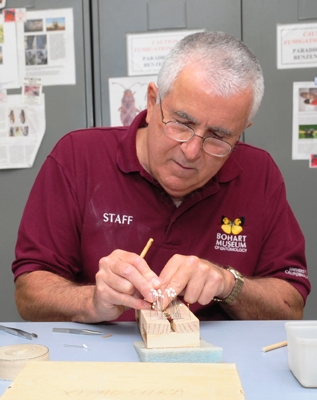
The special activity, “Moth Night,” will take place from 8 to 11 p.m. at 1124 Academic Surge on Crocker Lane, UC Davis campus. Free and open to the public, it will include outdoor collecting; viewing of the Bohart Museum's vast collection of worldwide moth specimens; demonstrations on how to spread the wings of a moth; and information on how to differentiate a moth from a butterfly. Free hot chocolate will be served.
The event is in keeping with National Moth Week, July 18-26, an annual event coordinated by Friends of the East Brunswick (New Jersey) Environmental Commission. This year, National Moth Week will spotlight the Sphingidae family of moths found throughout the world commonly called hawk moths, sphinx moths and hornworms. Citizen scientists will be out in force to record and photograph what they see that week.
Tabatha Yang, public education and outreach coordinator of the Bohart, said that after the sun sets, a black light demonstration will be held. Visitors will collect moths from a white sheet, much as residents do around their porch lights.
Entomologist Jeff Smith of Rocklin, an associate and 27-year volunteer at the Bohart Museum, will show visitors how to spread the wings of moths. Smith curates the 400,000-specimen Lepidoptera collection at the Bohart Museum. Smith organizes and identifies the butterflies and moths, creates the drawers that display them, and the labels that identify them. In between, he shares his passion for insects and spiders at outreach programs. Smith has spread the wings of 200,000 butterflies and moths, or about 7000 a year, since 1988.
Naturalist Greg Kareofelas of Davis, a longtime associate at the Bohart Museum, will assist with the open house and the outdoor collecting. The Bohart Museum, directed by Lynn Kimsey, professor of entomology at UC Davis, is a world-renowned insect museum that houses a global collection of nearly 8 million specimens.
Moths continue to attract the attention of the entomological world and other curious persons. Scientists estimate that there may be more than 500,000 moth species in the world. “Their colors and patterns are either dazzling or so cryptic that they define camouflage,” according to National Moth Week spokespersons. “Shapes and sizes span the gamut from as small as a pinhead to as large as an adult's hand.” Most moths are nocturnal, but some fly during the day, as butterflies do.
The Bohart Museum traditionally celebrates Mother's Day with “Moth'ers Day,” holding an open house.

